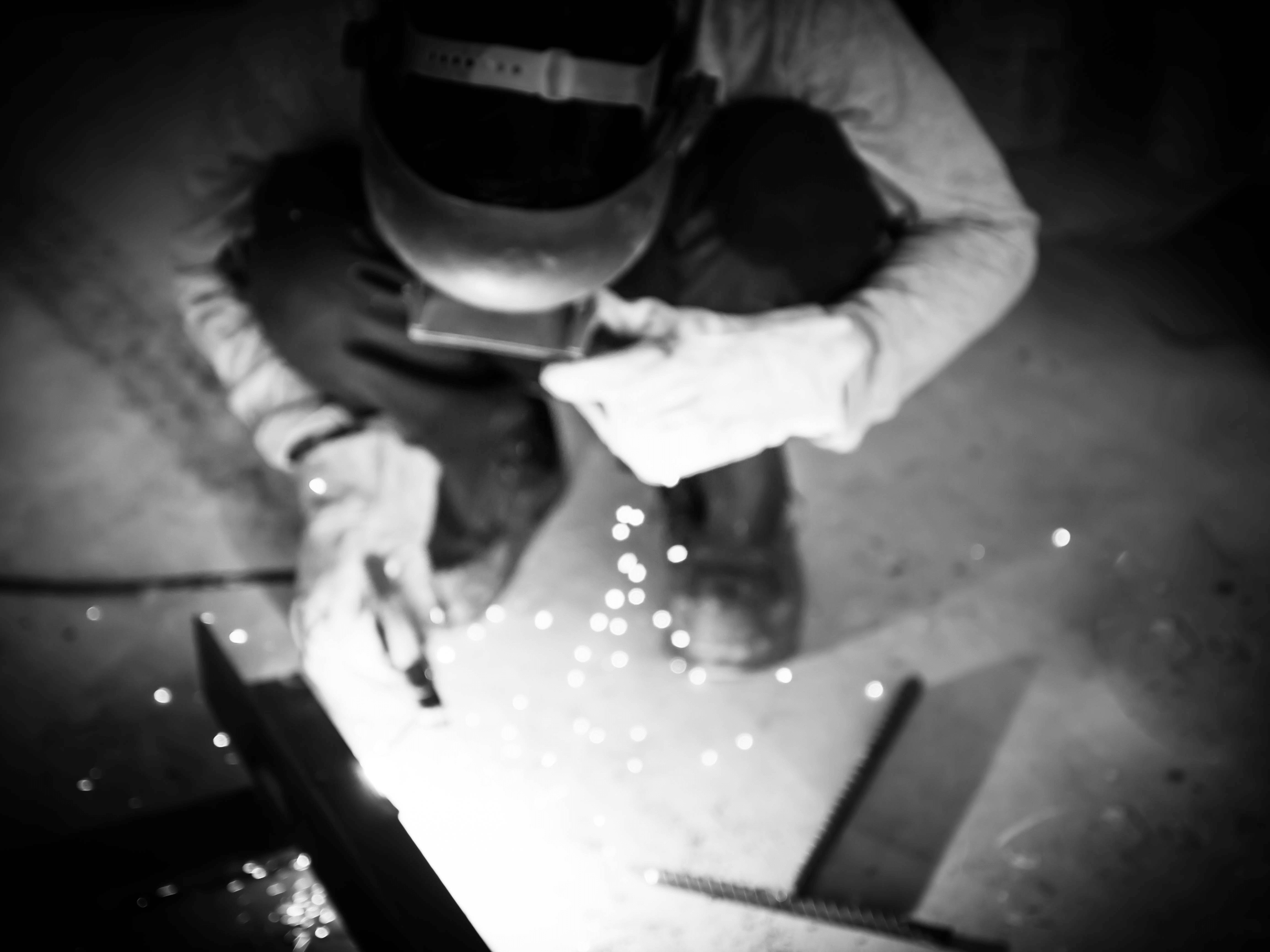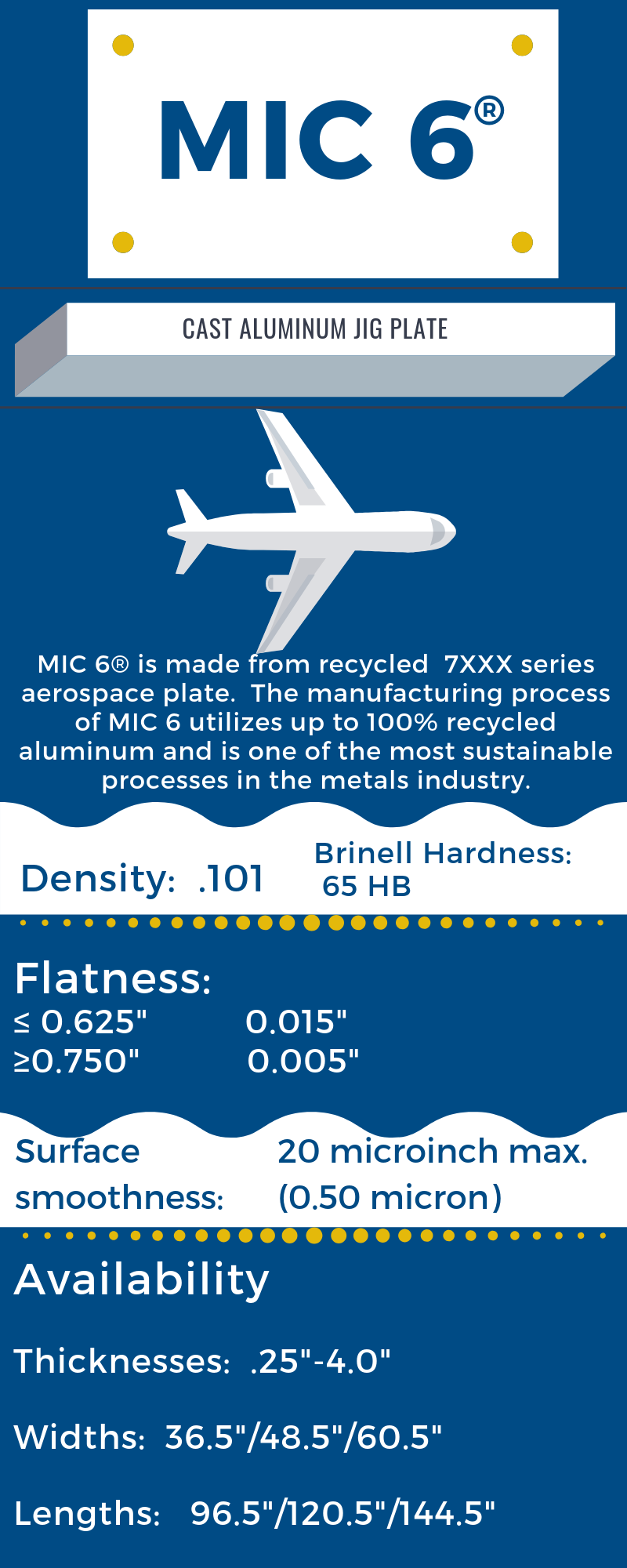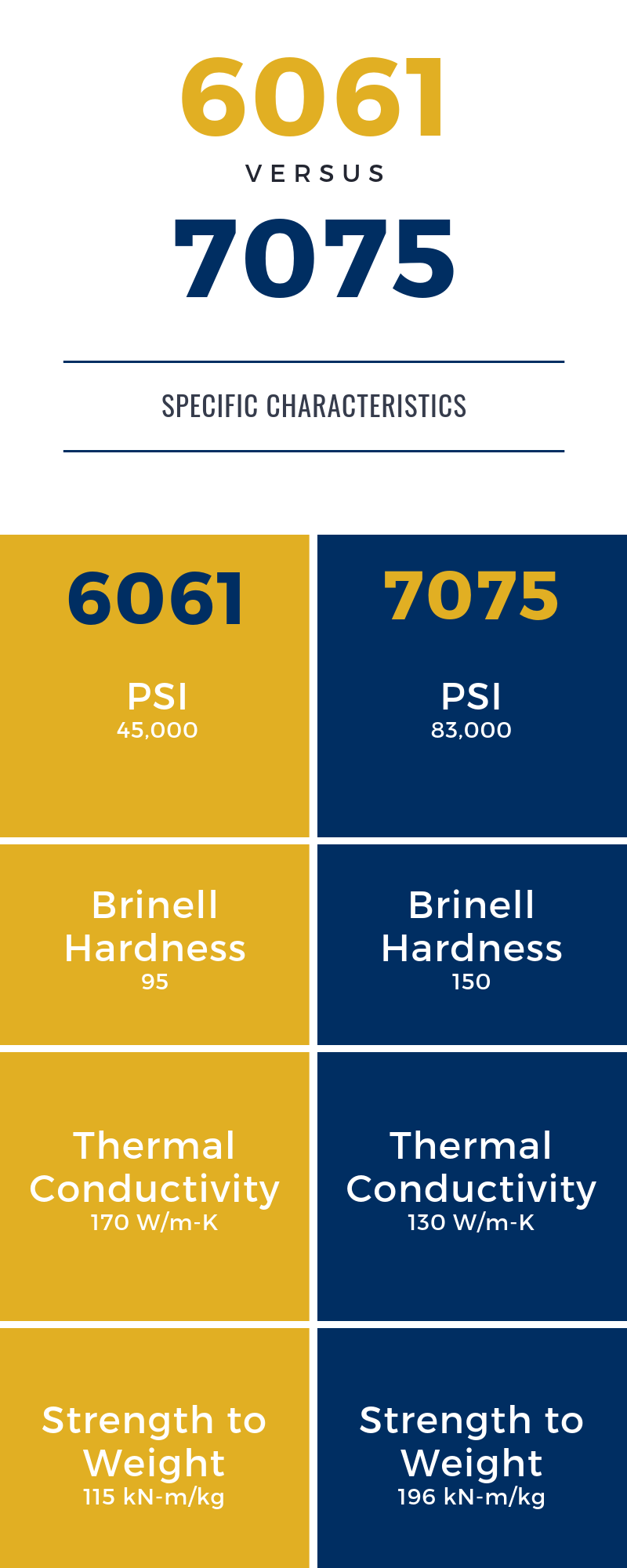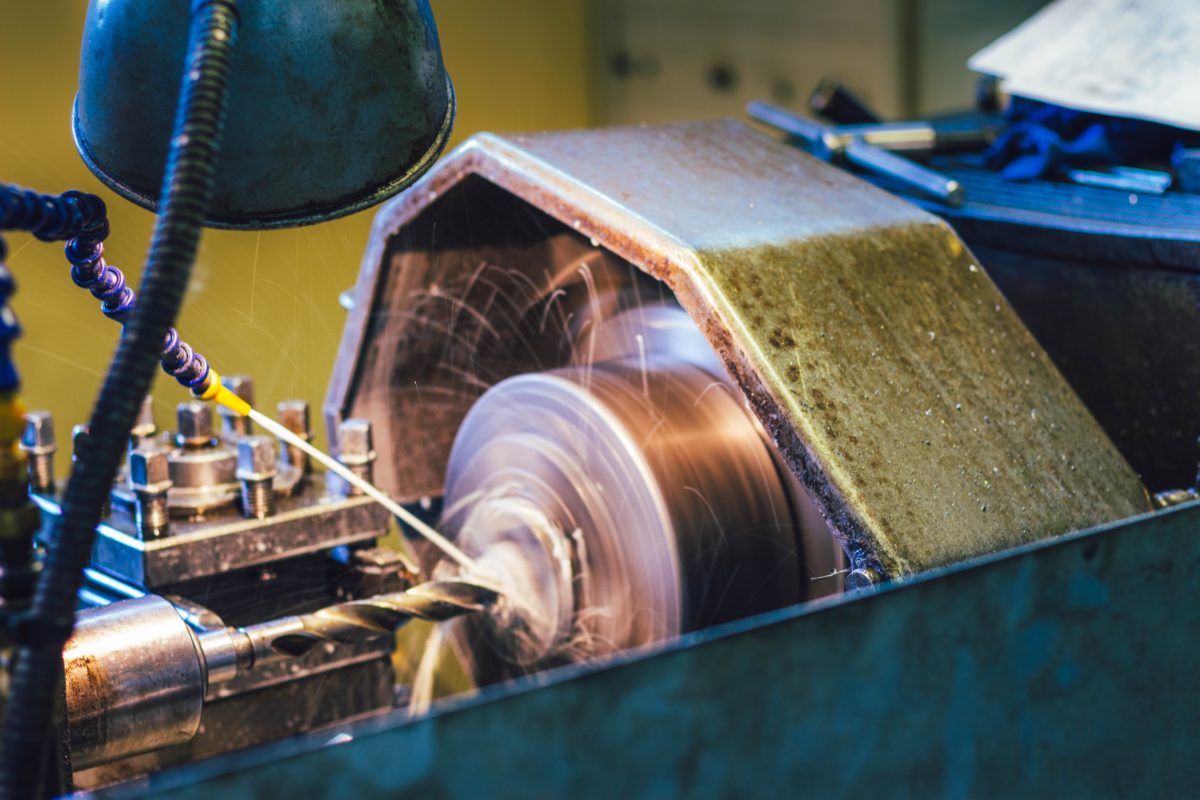When you are looking for a versatile metal, you’d be hard pressed to find one that is more versatile than aluminum. Thanks to its strength-to-weight ratio, it’s corrosion resistance, its machinability and other characteristics, aluminum is a prime choice for a myriad of applications.
Once more, aluminum is available in numerous alloys and products, such as plate, extruded bar, sheet, and even custom shapes. In this post, we are going to compare the differences and similarities of two alloys: 2024 aluminum and 6061 aluminum. With this knowledge, you’ll be able to distinguish which is more appropriate for your application. Before we explore attributes of specific aluminum alloys, let’s look at what these four-digit alloy designations mean.
Aluminum Alloy Classification
An alloy is defined as the combination of two or more metallic elements to form a metal. The purpose of alloying metal is most often to either give greater strength or corrosion resistance to the material. Depending on the additional elements, these additions can improve density, conductivity, workability and of course, material strength of the aluminum. In aluminum, the most common alloying elements are copper, magnesium, silicon, tin, and zinc. In aluminum, both wrought and cast alloys use identification systems as defined by The Aluminum Association. Cast alloys use a four to five-digit number that includes a decimal point. Whereas, wrought aluminum, like 6061, 7075, and 2024, use a four-digit number, which defines the alloying materials.
As previously stated, four-digit alloys like 2024 and 6061 are known as wrought aluminum alloys. The first digit in these four-digit classes identifies the principal alloying agent. For example, aluminum in the 2xxx series uses copper as the principal element. The addition of the copper adds strength to this series of alloys. The most common alloy series, the 6xxx series, utilizes both silicon and magnesium as the principal alloying elements. Aluminum alloys such as 6061 and 6063 are easy to machine, can be hardened, and are weldable. These characteristics are why the 6xxx series alloys are the most commonly used alloys.
Wrought 2024: Aluminum & Copper
Although 2024 aluminum is commonly formed into plate, it is also available in bars and shapes. Even though it’s susceptible to heat cracking and stress corrosion when it’s welded, 2024 has been a go-to alloy for the aerospace industry for more than 50 years. While you’ll find many 2xxx series on today’s aircraft, 2024 stands out for its versatility as you’ll find it on wing tension members, fuselages, panels and more.
How is 2024 aluminum used? Where 2024 aluminum plate truly shines is in its ability to resist metal fatigue. Metal fatigue is the weakening that occurs over time when metal is repeatedly exposed to load bearing or other forces. In the simplest terms, metal fatigue is when metal weakens after exposure to force. However, 2024 was the aluminum specifically crafted to maintain strength and performance even under repetitive and load bearing applications. Because 2027 can withstand numerous load bearing operations without being compromised, it is still considered incredibly reliable even by today’s standards. This copper aluminum alloy is still used in the manufacture of today’s aircraft and is responsible for keeping millions of passengers safe every year.
Wrought 6061: Aluminum, Magnesium, & Silicon
What is 6061 aluminum? At Howard Precision, we answer by saying that 6061 is the standard go-to aluminum for general purpose applications. This alloy is synonymous with versatility. This is evident in that fact that 6061 is used to produce sheet, plate, extruded shapes, and even custom aluminum shapes. This alloy is heat treatable and possesses fantastic corrosion resistance, formability, and weldability. Because of these characteristics, a variety of industries use 6061 for their parts and products. For example, the agriculture industry utilizes 6061 often for their electronics, storage tanks, pipework, hydraulic cylinders and more. This special alloy is also found in items such as scuba tanks, bicycle frames, fly fishing reels, automotive parts, and even flashlights.
Designated as a heat-treatable alloy, this means that 6061 can be significantly strengthened by heating and then cooling this metal. Aluminum alloys that can be strengthened in this manner include wrought alloys in the 2xxx, 6xxx, and 7xxx series as well as cast alloys in the 2xx.0, 3xx.0, and 7xx.0 series. Although 6061 does not machine as well as 2024, it is still a great option for many machined parts applications that don’t require the highest level of strength.
What alloy should I choose for my application?
The best way to answer this question is by establishing your needs. Here are some topics to consider:
- What is the end use of the part?
- What machining process(es) will be used to make your parts?
- Will this product be exposed to high amounts of water?
- How much machining is required?
- Will this part be exposed to forces or stresses?
- Will there be any exposed surfaces?
Why choose Howard Precision Metals?
We’ve been in business since 1928 and we know aluminum better than anyone. Why? We are a 100% aluminum distributor and saw house. Not only do we have extensive on-hand inventory, but it is 100% aluminum and includes 2024 aluminum plate,6061 aluminum plate, cast tool and jig plate, 6061 aluminum extrusions, and more. In addition to our impressive inventory, we also pride ourselves in producing the best saw cut aluminum pieces. With our custom-built, high-speed precision plate saws, we offer tolerances as tight as ±.005” and include a squareness guarantee.
Not only do we have the stock and the equipment to meet your aluminum needs, we have a knowledgeable, customer-focused staff who puts the priority of our customers first every time. We truly get to know you and your needs. By creating partnerships with our customers, we can all grow together.
To learn more about our products and services, get a quote, or simply to learn more about Howard Precision Metals, call us at (800) 444-0311 or leave us a note on our contact form today.








